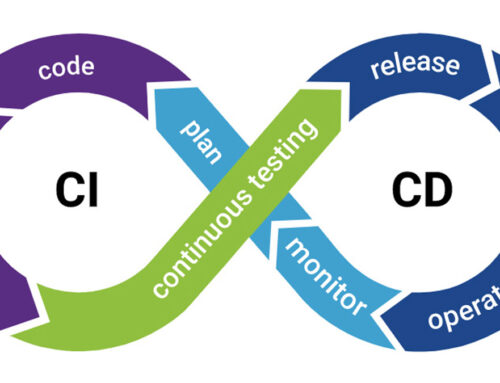Native apps have been the standard for years in the mobile app market. These platform-specific apps have provided users with rich experiences tailored to their devices. However, as technology evolves and user expectations grow, the demand for more accessible and cost-effective solutions has become apparent.
Custom web apps, particularly Progressive Web Apps (PWAs), are emerging as a powerful alternative to native apps in 2023, offering numerous advantages that cater to the ever-changing needs of users and businesses alike.
In this article, we will explore the shift from native apps to custom web apps, the benefits of embracing custom web apps, and how PWAs are uniquely positioned to meet user expectations in 2023. We will explore the features and advantages of PWAs over traditional web apps, discuss their potential to revolutionize the mobile app landscape, and provide examples of successful PWAs in action.
The Benefits of Custom Web Apps over Native Apps
The benefits of custom web apps span across development, maintenance, accessibility, and overall user experience, making custom web apps an attractive option for businesses and developers alike.
- Cost-effectiveness: Developing native apps for multiple platforms can be expensive, as it requires separate codebases for each operating system (e.g., iOS, Android, etc.). Custom web apps, on the other hand, are built on web technologies such as HTML, CSS, and JavaScript, allowing developers to create a single app that works seamlessly across multiple platforms. This significantly reduces development costs and maintenance efforts, making custom web apps a more affordable option.
- Faster development and updates: Custom web apps, particularly PWAs, enable faster development cycles compared to native apps. They allow developers to make updates and improvements without having to go through lengthy app store approval processes. Users also benefit from real-time updates, as they don’t need to manually download and install new versions of the app.
- Easier distribution and discoverability: Native apps must be downloaded from app stores, which can limit their visibility and discoverability. Custom web apps, including PWAs, can be accessed directly via a web browser, making it easier for users to find and use them. Furthermore, web apps can be shared through simple URLs, facilitating increased distribution and user acquisition.
- Enhanced accessibility: Custom web apps are accessible across various devices, operating systems, and browsers, ensuring a wider reach and more inclusive user experience. PWAs, in particular, are designed to work well on both low-end and high-end devices, catering to a diverse user base.
- Offline functionality: One of the standout features of PWAs is their ability to function offline or on low-quality networks. By leveraging service workers and caching technologies, PWAs can provide users with a consistent and reliable experience, even in areas with limited connectivity.
- Improved user engagement: PWAs offer native-like experiences, including features such as push notifications, home screen icons, and full-screen capabilities, which contribute to improved user engagement. As these web apps closely mimic native app experiences, users are more likely to engage with them, resulting in increased user retention and satisfaction.
Meeting User Expectations with PWAs
As we move further into the digital age, user expectations continue to evolve. In 2023, users will demand more from their digital experiences – including faster load times, seamless functionality, and exceptional user interfaces.
Progressive Web Apps (PWAs) are well-positioned to meet these expectations, offering an optimal combination of web and native app features. Let’s explore how PWAs can help businesses meet user expectations in 2023:
1. Instant loading and enhanced performance
PWAs leverage advanced caching mechanisms and service workers to ensure instant loading and improved performance, even on slow or unreliable networks. This responsiveness is essential for meeting user expectations, as it directly impacts user satisfaction and conversion rates.
2. Adaptive design and cross-platform compatibility
Users expect a consistent experience across devices and platforms. PWAs are built with responsive design principles, ensuring they adapt to different screen sizes and device types. This cross-platform compatibility allows businesses to deliver a seamless user experience, regardless of the device or browser being used.
3. Engaging user experiences
PWAs offer native-like features such as push notifications, home screen icons, and full-screen capabilities, which contribute to an engaging user experience. By incorporating these features, businesses can create more engaging and immersive experiences, fostering user loyalty and satisfaction.
4. Secure and reliable
Security and reliability are critical components of user expectations. PWAs are served over HTTPS, ensuring secure data transmission and protecting user information. Moreover, their offline functionality and ability to work in low-quality networks provide users with a reliable experience, even in challenging connectivity conditions.
5. Easy discoverability and shareability
PWAs can be easily discovered through search engines, as they are indexed like traditional web pages. This makes them more visible and accessible to users compared to native apps, which must be found and downloaded through app stores. Additionally, PWAs can be shared through simple URLs, making it easy for users to recommend and share the app with others.
6. Cost-effective for businesses
By reducing development and maintenance costs, PWAs provide a cost-effective solution for businesses looking to create high-quality digital experiences. This affordability allows businesses to allocate resources to other areas, such as marketing and user research, ultimately helping them better meet user expectations.
In conclusion, PWAs are poised to play a major role in meeting user expectations in 2023. Their combination of web and native app features, as well as their adaptability, performance, and cost-effectiveness, make them an ideal choice for businesses aiming to deliver exceptional digital experiences that align with the ever-evolving demands of users.












